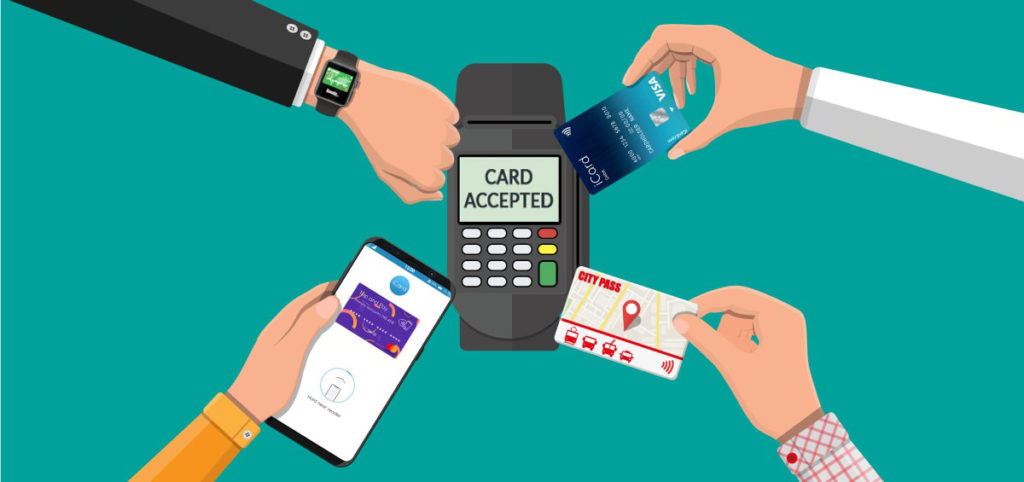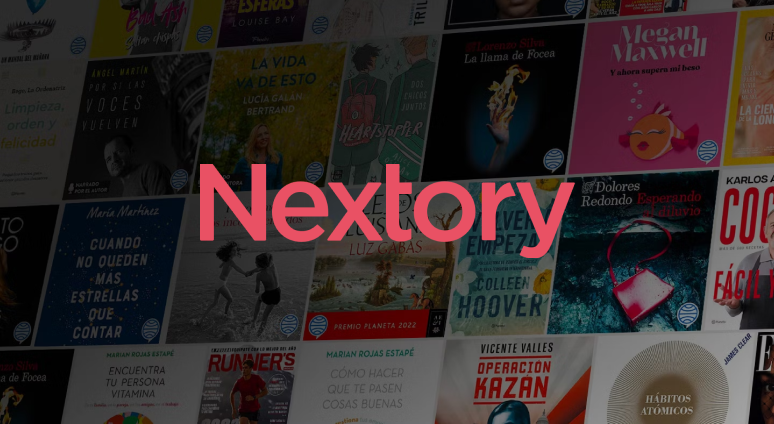Loyalty partnerships: optimized models for partner contracting

As everyone knows in the loyalty industry, entering into new commercial agreements with partners can be a very time-consuming effort.
First, there are the commercial discussions. Then there is the legal contracting – which involves all key stakeholders in creating a typical 30-40 page contract. Then there is the technical integration effort, and finally the collaborative marketing planning to promote the new partnership.
After 2-18 months, a new partnership may go live, but during this time, 4-12 professionals across both companies have often invested hundreds of hours in the new relationship. Unless the volume of business is high, there is never a positive return on investment (ROI).
For this reason, only very large partners end up collaborating even though the loyalty program members engage with thousands of medium or smaller potential partners on a daily basis. The earning opportunity and data insights that could be captured among this much larger network holds enormous benefits that can’t be realized with legacy partner collaboration practices.
This is a major opportunity cost for every loyalty program.
The purpose of this article is to explain how the complexities of partner contracting in loyalty programs – and associated delays and costs – can be mostly eliminated.
First, we will describe the common components of loyalty partnership agreements, and explain why the legal department has become a blocker to scaling your partner network – although it is not the legal team’s fault.
Next, we’ll go into the 4 different models of partner contracting in loyalty marketing – explaining why each model exists, and how the time required to implement each type of agreement can be reduced. We also explain why a loyalty program can deploy a mix of the models to meet their unique requirements.
Finally, we will discuss the efficiency gains possible in reconciliation and settlement across loyalty partnerships. When customers earn or burn across partners, or exchange from one program into another, a financial transaction takes place between the two brands. In most cases, one partner owes the other some amount of money for using points to drive customer engagement, which typically involves monthly invoicing with each individual partner. This workload can now be greatly reduced.
The glacial pace of partner contracting is a direct obstacle to growth for program operators and their partners alike. Ultimately, this affects the degree of potential customer engagement, and the rich data that can be harvested to improve profiling and personalization.
It should be everyone’s common goal to get the partner onboarding process as streamlined as possible, because the lower the upfront cost is, the higher the ROI will be from new partnerships.
Understanding the legal obstacles to partner collaboration
We first became aware that the legal department was a blocker to partner loyalty as part of our work in resolving the connectivity obstacles that consumed significant, yet scarce, IT resources.
Whereas the process of discovering new partners, agreeing commercial terms, and integrating often took months, it can now take just days. The trouble is that new data security requirements now make the commercial agreement between partners much more important, and that places significant new burden on the legal department. Because legal support is often spread across many functions in a business, getting their scarce time for partnership contracts became the new bottleneck in partner onboarding.
Through our work helping hundreds of companies onboard new partners, we learned three key lessons about the legal processes involved.
One was that 95-98% of the words and phrases in each agreement were effectively the same for each new partner. Of course, most companies rely on templates to reduce the workload, but the degree of customization and back-and-forth between the parties’ legal teams means this can still take many months. This is because most partnered loyalty programs follow decades-old practices of creating custom contracts.
Second, we learned that brands really needed different ‘models’ of partnership agreement depending on their business category, the geographic region of the world in which they operate (due to evolving data protection legislation), and the type of partnership. Two of these models:
- traditional, custom agreements between brands
- …and replicable agreements that can be used from one partner to the next with minimal customization – albeit different schedules for GDPR and similar legislation
…already existed in the market, although as we describe below, we’ve developed a standardized scalable agreement which greatly simplifies both models.
The other two models are:
-
- Standardized Agency Agreements – where a third party enables the contract
- Serviced Agreements – where the third-party (such as Currency Alliance) also handles the administration and financial aspects of the ongoing partnerships. In this case, the contract is with the third party (i.e., with Currency Alliance), so no agreement is required with individual partners. We just rely on the loyalty program operator to agree which other partners can participate, and allow them to provide guidance on important variable terms like price per point/mile, payment terms, etc.
Those two models are both Currency Alliance innovations (though various types of agency agreement are common in other industries). Both are designed to enable brands to create and handle partnerships at larger scale, which is fast becoming a competitive advantage in partner loyalty.
The third learning was that reporting, reconciliation and settlement between partners adds up to a significant workload. This means that, as brands gain the ability to strike up contracts more quickly, there need to be measures in place for handling the increased volume of administration.
So, the final section of this article offers some useful advice on how to manage and streamline the administrative workload at scale.
The 4 models of loyalty partnership agreements
As mentioned, there are two existing models for loyalty partnership agreements, and new models which Currency Alliance has been able to pioneer thanks to its technology and experience with partner contracting.
As a shortcut, this table shows time implications and ideal uses for the different types of agreements.
| Model | Contracting time with partner | Suitable for partner types |
| Traditional | Very high | Strategic |
| Standardized | Medium | Any size partner |
| Agency | Low | Small to medium |
| Serviced | Very low | Any size partner |
It’s worth mentioning that a brand can enter into multiple types of agreements depending on the magnitude of opportunity with each partner. We call this a mixed approach where the contracting method can vary from one partner to the next depending on the nature of the partnership.
This creates efficiency and scalability since you can enter into a wider range of partnerships and sell more points/miles, while your customers can get to interesting rewards faster. Driving engagement beyond your own four walls allows you to capture genuinely insightful data, from more partners, in order to improve customer profiling and personalization.
Model #1: Traditional agreements
Largely custom, direct contracts between brands.
This is the existing practice at many brands. The currency owner or loyalty program operator negotiates individual partnership agreements with different partners, exactly as has been done for many years.
This involves the commercial team identifying potential partners, reaching a broad commercial agreement, and engaging the legal department to draft a custom agreement (perhaps based on an existing legal template that has been used many times before).
In this scenario, there is a direct commercial agreement between you and each partner. This will likely remain a preferred way of working for flagship partnerships between enterprise brands, since the partnerships are likely to be of high commercial value, broad in scope, and highly visible to customers and other brands.
Model #2: Standardized Scalable Agreements
Two-part frameworks that reduce the customization needed from one partner to the next.
Brands have always used template contracts for simpler agreements. Currency Alliance’s ‘Standardized Scalable Agreements’ are simply a way of making these templates even more standard across partner types for brands and their legal teams. They also accommodate for the nuances of contracting with partners across countries that have different partnership legislation.
The core principle is that the majority of a contract will not change from partner to partner. Any two standard partnership agreements may have 15 – 60 pages of clauses that are identical in substance – i.e., force majeure, intellectual property, limitation of liability – and then 2-3 pages which require customization for each partnership.
Currently, loyalty currency owners or program operators are mostly still handling this as a single document. Currency Alliance’s Standardized Scalable Agreements simplify this by breaking the agreement into two standard documents.
The first document is based on an existing legal document template, containing the standard terms & conditions that rarely change from one partner agreement to another. This standard template can be customized to the currency owner or loyalty program operator’s legal description, company IDs, address, loyalty currency and program name, governing law and legal jurisdiction, etc.
The second document covers the variables that may change from partner to partner – such as name of the partner, their company registration information, the price per point/mile, payment terms, minimum/maximum purchase amounts, etc. This can be a simple 2-3 page template.
The two documents then become the overall participation agreement without the need for further legal review or involvement. We call this a ‘participation agreement’ – in spite of the fact that it forms the traditional loyalty program partnership agreement – because the term ‘partnership’ has many legal connotations in many countries of the world. Many of these implications are not appropriate for loyalty partnerships.
Where the two parties rely on the Currency Alliance’s provided framework, the partnerships team still undertakes commercial discussions – so there is still a direct commercial agreement between the currency owner/loyalty program operator and the partner. But both brands gain efficiencies by relying on templates based on global best practices.
Model #3 Standardized Agency Agreements
An ‘agent’ such as Currency Alliance does the negotiations on your behalf, under your guidelines.
Agency agreements are common in other industries, where one company gives ‘agency’ to a third party to make contractual commitments on their behalf – either because they don’t have time, or to tap into the agency’s specialist skills or resources. This is similar to a ‘power of attorney’ in many countries.
This is valuable because of the large potential number of partners that may be desired to deliver broad coverage for your loyalty program members in a competitive market.
Some will be selected flagship partnerships, or those where you invest in co-marketing, and so can probably only partner with one brand in each category.
Beyond those partners, however, many loyalty teams don’t have the resources to approach the dozens or hundreds of other brands that can be relevant to their loyalty program members. The important thing is that these partners are popular brands with the right profile of customers in common.
For example – as a loyalty program building its partner network, it may be irrelevant whether your customers can earn or burn your points at Starbucks or Costa Coffee. Both sell the same basic product at roughly the same price, and have pretty similar customer profiles, so ideally, you’d like to be partnered with both to extend the reach of your loyalty program. The problem with many partners is that they tend to operate only in one country – so while Starbucks is a global brand with operations in many countries, their loyalty collaborations will be on a country-by-country basis. Therefore, you might work with Starbucks in the UK, but Costa Coffee in The Netherlands.
The likelihood is that if you are an international loyalty program, you would also like to be partnered with several other comparable coffee chains in other markets. Similarly, a telco might be partnered with 2-4 different cinema groups across a region like Western Europe; a credit card issuer would probably like to partner with a dozen or more restaurant chains in their home country.
Contracting each of these partnerships individually would add up to a significant workload. So, Currency Alliance’s Standardized Agency Agreement enables us to secure contracts based on your desired partner profiles across our broad marketplace of international, regional, or local collaborating brands.
Under this relationship, the agent (ideally Currency Alliance) acts on the currency owner/loyalty program operator’s behalf to find partners, conduct the initial negotiations, and sign the same commercial agreements that would be used in Model #2.
Currency Alliance will follow guidelines related to the type of partners that are desired, the price per point/mile, payment terms, etc. The agreement is still between the partner and the currency owner/loyalty program operator who, of course, still has the final say in which companies they partner with.
Additional responsibilities can be added to the Agency Agreement. Those might include communicating any requirements for using the brand/logo of the currency owner/loyalty program operator, whether approvals are required before new campaigns are launched, invoicing responsibilities, etc.
Model #4: ‘Serviced’ Agreements
In this scenario, the partner aggregator, which could be Currency Alliance, is your partner and responsible for payments, etc. You still have the opportunity to approve the partners, but you do not have a written commercial agreement with each one.
‘Serviced Agreements’ evolved out of many requests from Currency Alliance clients. Brands wanted us to take responsibility for finding partners and making sure the points/miles issued were paid for – without the need to establish commercial agreements with each partner. In order to explain this model, it’s necessary to briefly explain Currency Alliance’s core business of loyalty partner facilitation and partner lifecycle management.
With the Currency Alliance platform, brands don’t need to connect directly with each other in order for their customers to earn and redeem in either brand’s loyalty currencies. Instead, the two brands connect to Currency Alliance, which transforms the data in order that the transactions can be understood and processed correctly between the loyalty systems of each brand.
We basically abstract all the complexity of connecting with partners by offering an industry standard API that any company can easily connect to – and then we transform the data to interact with partner systems This connectivity via a centralized hub also greatly reduces exposure to security and data breach concerns because you don’t end up with dozens of point-to-point connections with partner systems that you may not be able to fully trust.
This also means, however, there is no need for the currency owner/loyalty program operator to have a direct commercial agreement with each partner.
If it’s your preferred setup, Currency Alliance is the ‘partner’ that buys points/miles from the currency owner/loyalty program operator, and can sign up new partners in market segments approved by you in advance. You can also specify the payment terms, price per point/mile, be responsible for invoicing and collection, etc…
For example, Currency Alliance would receive a single invoice each month based on the actual number of points/miles issued by all the serviced brands; we will be 100% responsible for settling the invoice based on the agreed payment terms.
As we explain next, the ongoing management of partnerships has traditionally required a lot of work. The benefit of the Serviced Agreement is that it enables brands to manage a far greater volume of partners at greatly reduced time and cost.
Streamlining invoicing and collection between partnered loyalty brands
Once a loyalty partnership is up and running, the two key parts of the work of managing that partnership are:
- arranging coordinated marketing actions to drive customer engagement
- …and handling the reconciliation and settlement of financial transactions between the brands.
In the most commonplace setup, one or both of the partnered brands will generate invoices for the points/miles issued, redeemed, or exchanged.
The payment for points/miles can be in advance – meaning that the partner needs to buy inventory of the points/miles they will issue and provide those to customers out of their inventory. In this case, payment is received up front from the partner, so there is no collection risk.
An alternative is that one partner provides the other partner with ‘credit’ or a credit limit – which allows them to issue points/miles during the course of a period such as one month without exceeding the credit limit. In this case, the points/miles are paid for in arrears, or at the end of the period based on the actual number of points/miles issued. The issuing partner benefits by not having to commit to a particular volume of points/miles in advance, but this introduces some collection risk, and usually a delay for the currency owner to collect their funds.
The Currency Alliance platform supports payment in advance, as well as collection in arrears, but we have also introduced a third innovative option, which relies on escrow accounts to facilitate reconciliation and settlement, while reducing collection risk or delays in getting paid. When escrow accounts are set up, the issuing partner deposits real money (USD, GBP, Euros, etc.) in a real bank account. As points are issued or exchanged, we move the value from the issuing partner’s escrow account into the currency owner’s escrow account so there is no collection risk at the end of the month and funds can be withdrawn immediately.
When funds are held in escrow, they belong to the entity that made the deposit, so they can withdraw their money whenever they want – as long as that value has not already been used to issue the partner’s points/miles.
Of course, for an enterprise brand with several hundred partnerships, the administrative work involved in keeping track of invoicing and payments across all partners adds up to many full-time equivalents (FTEs) in your team.. Our entire platform is therefore designed to streamline all these processes so you can manage partners at scale.
We have a few clients who have reduced the size of their accounting team by 3-5 FTEs through using Currency Alliance to handle the majority of their reconciliation and settlement. They just issue one invoice per month to Currency Alliance, and we invoice all their partners on their behalf.
Similarly, issuing partners who are collaborating with many loyalty programs can get the benefit of one invoice from Currency Alliance for all the points/miles they have issued in multiple programs. They do not have to make transfers to each partner individually.
Of course, brands can still invoice partners individually if they prefer, as agreed between the parties in the partnership agreement. You can also choose one invoicing & collection method for one partner, and another method for the next, as appropriate to the individual partnership.
Here are a few more options for the processing of your invoices:
- If points/miles must be purchased in advance, you can rely on Currency Alliance to generate the invoice and collect the money, or invoice the partner for payment directly to you; you simply then log into your account and approve the purchase order. Currency Alliance is responsible for managing the account to ensure that no more points/miles are issued than have been purchased.
- When purchase in advance is implemented, our platform automatically informs the partner when their balance reaches various thresholds of remaining points, i.e., 25% or 10%, so they can top up their account before running out of points/miles.
- If the invoices are generated at the end of each month based on the actual points/miles issued, then you can send the invoices to the partners, or rely on Currency Alliance to do that for you. Furthermore, you can set the invoicing frequency to weekly, bi-weekly, monthly, or at a custom schedule depending on the partnership volume and financial risk.
Based on these options, the currency owner/loyalty program operator remains in complete control over how they collaborate with each partner, under what terms, and how they prefer the back-office operations to be performed.
*
We have seen similar models where a third-party company acts as a broker, buying points/miles in bulk and then selling them on to partners.
Working with brokers reduces the number of monthly invoices from many to few – but the ‘broker’ is often marking up the cost per point/mile by 15% to 55% before selling onto partners.
When a markup is added, your members end up getting far fewer points/miles from the partners. Effectively the portion of incremental revenue generated from your members ends up buying fewer points/miles that can be awarded.
And, perhaps worse in this broker model, the currency owner has little visibility into which partners are actually issuing their points/miles and engaging with their members – which further decreases the data sharing opportunities with partners.
Because we believe in full transparency, Currency Alliance does not act as a broker. We simply enable all the other types of points transactions described above between brands, with greatly reduced workload, and pass on the most attractive price per point/mile to each partner. Currency Alliance provides these additional value-added services at no additional cost.
Accelerate time to value from new loyalty partnerships
Digital transformation is about more than technology. Innovative solutions nearly always break processes in organizations. So, it’s important to be aware of these before you upgrade your software and have a plan in place for how the business and your team will need to change operations to keep up.
In loyalty, the evolution of legacy processes around partner contracting and partner management is important for various reasons.
For one: it frees up your legal teams to focus on higher-value work. But more importantly than that, it allows brands’ partnership networks to mature and evolve with far less friction – having a direct impact on your ability to engage customers and cultivate loyalty.
The expression, ‘time is money’ is a cliché but it’s directly relevant here. Let’s assume that the average new loyalty partnership adds 0.25% incremental revenue to your loyalty program. If your legal team has capacity to process 10 custom partnership agreements per year, that means the value of your partner networking efforts is capped at +2.5% annual recurring revenue (ARR). If your loyalty team could be arranging 10% to 15% growth in partnerships, then the legal constraints are blocking about 10% growth in ARR. And, your members are missing out on many new touchpoints to engage with your brand.
With the far higher speed of partner connectivity that’s now possible, such a level of opportunity cost can no longer be considered acceptable.
The speed at which you can create partnerships is now a competitive factor – and one you need to leverage before desirable partners end up working with your competitors. The more you can reduce the costs and workload of those efforts, the more resources can be channeled into more rewarding experiences, for the many more customers who engage with your brand.
Optimize partner lifecycle management with Currency Alliance
Currency Alliance is a SaaS solution operating a global B2B marketplace for brands to collaborate with each other to drive customer engagement.
The services include providing connectivity between partnered loyalty programs, finding new partners, facilitating commercial agreements, delivering consistent reporting, and other value-added services such as reconciliation and settlement.
With our software, brands can enable the issuance, redemption, and/or exchange of points among partners based on only those partners you choose to work with, and based on the use-cases you want to deploy with each partner. This means you remain in total control, taking advantage of modern technology in order to manage partnerships more efficiently at scale.
We know that most loyalty program management systems have an interface for partners to connect, but none of those solutions are purpose-built to manage partnerships in a flexible/adaptable way. Many of our clients with systems from Comarch, Loyalty Partner Solutions, IBS, AnnexCloud, Epsilon, Amadeus, SessionM, Kobie, or others take advantage of these systems’ core capabilities to operate the loyalty program. They extend that functionality for multi-partner management with Currency Alliance, as a thin layer of cloud-based technology in front of the core loyalty engine.
Importantly, when benefiting from Currency Alliance’s capabilities, each partner can pick and choose which services they want to enable, with only a small fee to pay to Currency Alliance when transactions take place. And that small fee is often paid by the partner. This allows you to maximize the value delivered to incentivize customer behavior to maximize ROI for your company.
Visit CurrencyAlliance.com to find out more.





